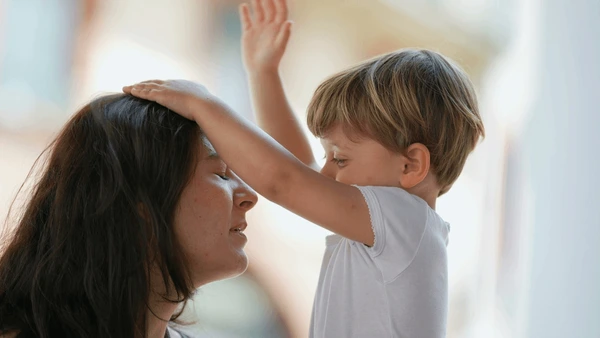
Hitting and laughing autism: What Parents Should Know
Behavior is often different in autism children, perceived by parents or caregivers as odd. One example would be hitting while laughing; this may create confusion and concern, especially because parents are not sure if it is intentional aggression or a sensory reaction. Understanding why a child with autism exhibits this behavior is a prerequisite to managing it properly.
Hitting and laughing in autism can be caused by many things, from sensory processing problems to communication difficulties, even emotional regulation problems. Some children would hit when overwhelmed, while others would hit as a type of play or for self-stimulation. Understanding what is behind that behavior enables addressing it appropriately by parents and caregivers.
Common Factors Causing Hitting and Laughing in Autism
1. Sensory Processing Difficulties
For children with autism, the environment has an influence on how they experience it. Some children seek their stimulation through movement or touching, and hitting allows them to satisfy that need. Because knocking appears to be stimulating or they find all reactions amusing, enjoying just makes it better.
2. Difficulties in Emotion Regulation
Many autistic children have trouble exhibiting their emotions correctly. When they experience frustration, excitement, or anxiety, they often hit things to express those feelings. Laughing might erupt because they don’t know what else to do since they cannot communicate what they are feeling in words.
3. Communication Barriers
Often, children with autism do not know how to communicate their needs or emotions. Hitting is usually their way of calling attention, signaling discomfort, or showing a need when words fail them. They might even “laugh” nervously out of confusion during such incidents.
4. Stimming Behavior
Common in autism, stimming consists of self-stimulatory behavior as one of them. Certain other children do things like straightening hands, rocking, hitting, or some repetitive act for self-regulation. As part of this pattern, they would laugh with it so that they have another sensory input to feel grounded.
5. Imitating Behaviors and Playing
Some of the children with autism will imitate seeing another example of behavior they do not completely understand. They may hit someone during play and laugh, having seen other people doing the same or behaving exaggeratedly.
Ways in Which Parents Can Deal with Hitting and Laughing in Autism
1. Identify Triggers
If you want to understand the triggers for this behavior, pay attention to the times and places in which this behavior occurs. Keeping a log about the incidents would reveal a pattern, for example, that hitting happens when it is mostly noisy, during transitions, or when the child is excited.
2. Alternative Methods of Communication
Broaden children’s means of communicating through non-verbal modes such as pictures, gestures, or assistive communication devices, so they can express themselves more appropriately and suffer less frustration, which can lead to aggressive incidents.
3. Use Sensory Strategies
Coming up with the right sensory input will keep these attacks away. Such examples are using deep-pressure therapy, fidgets, or weighted blankets, which will help a child cope with their sensory needs outside of hitting.
4. Model Appropriate Behavior
Parents and caregivers should show where gentle behavior is expected and reinforced through praise and reward. Redirecting attention of the child and reinforcing another behavior, say clapping or giving high-fives, would help replace hitting.
5. Make a Safe Environment
Reducing anxiety and overstimulation for the child is achieved through a routine and calm space for the child to retreat to whenever he feels overwhelmed. Expectations can be made clear to them using visual schedules.
6. Get Professional Help
Consult specialists who work in autism care when this behavior becomes either persisting or harmful. Ranging from behavioral therapy to speech and occupational therapies, much more has been available from Autism Care in Bangalore.
Expert Support to Parents: Autism Care in Bangalore
Parents seeking specialized support can get expert help and therapy options at the multiple autism care centers available in Bangalore. These include:
Applied Behavior Analysis: Teaches children the proper behavior making use of techniques that are structured.
Speech and Language Therapy: Improvement in communication that lessens these behaviors related to frustrations.
Occupational Therapy: Sensory integration along with motor skills to build on self-regulation-being potentially better.
Parental Training Programs: Equips parents with strategies to manage challenging behaviors at home.
Conclusion
Understanding Hitting and laughing in autism is critical for parents, now able to render support for the positive development of their children. With this knowledge, parents can manage their behavior effectively.
For families seeking professional guidance, Autism Care in Bangalore offers expert therapy and intervention programs tailored to each child’s unique needs. With the right support and understanding, children with autism can thrive in a nurturing and structured environment.
Don’t be afraid. Many resources and professionals are available to guide you through the journey of being a parent of a child with this behavior. With patience, consistency, and proper handling, your child can develop excellent behavioral skills and live a happy, meaningful life.